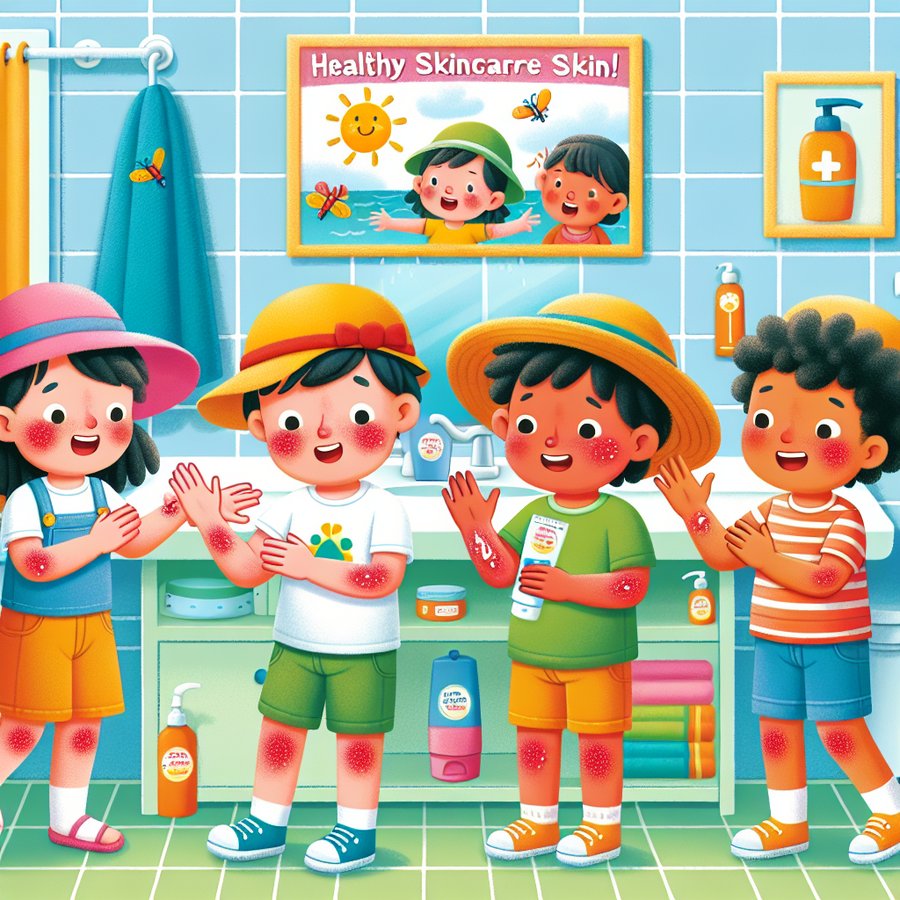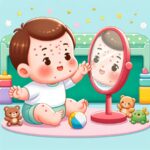Eczema, also known as atopic dermatitis, is a condition that can turn a baby’s soft skin into a patchwork of red, itchy, and inflamed areas. It’s a common concern among new parents, as they navigate through the myriad of skin conditions their little one might face. But fear not, understanding eczema is the first step towards soothing your baby’s discomfort and ensuring their skin is as healthy as possible.
What is Baby Eczema?
Eczema in babies is more than just dry skin. It is a chronic condition characterized by red, itchy, and inflamed patches that can appear anywhere on the body but are most common on the cheeks, forehead, and limbs. Its exact cause is unknown, but it is thought to be linked to genetic factors and a weakened skin barrier that allows moisture out and irritants in. This condition affects about 10 to 20% of infants worldwide. Thankfully, most children outgrow it before they reach adolescence.
For more detailed insights on skin conditions, consider reading about atopic dermatitis on our site.
Signs and Symptoms of Baby Eczema
Recognizing the signs of eczema early in your baby’s life can help you seek treatment sooner, providing relief for your little one. Common symptoms include dry, scaly skin, red and itchy patches, especially on the face, behind the knees, and on the elbows. These areas may also develop bumps and, in severe cases, leak fluid and become crusty. It’s crucial to note that the itching can be particularly bothersome for babies, leading to discomfort and difficulty sleeping.
Understanding the symptoms is pivotal in seeking the right treatment. To gain further knowledge on related conditions, you might find our article on dry skin useful.
How to Treat Baby Eczema
Treating eczema in babies involves a combination of home care strategies and possibly medical treatment. The goal is to relieve itching and discomfort and to prevent new outbreaks. Regular bathing in warm (not hot) water and applying moisturizer immediately afterward can help keep your baby’s skin hydrated. Choosing mild, fragrance-free soaps and lotions designed for sensitive skin is also crucial.
In more severe cases, a doctor may prescribe topical steroids to reduce inflammation or antibiotics if there is a bacterial infection. It’s also important to keep your baby’s nails short to prevent scratching, which can exacerbate symptoms and lead to infection. Additionally, identifying and avoiding potential triggers, such as certain fabrics, foods, or environmental factors, can help manage eczema.
For further information on managing your child’s skin health, check out our resources on allergies and itchy skin.
When to See a Doctor for Baby Eczema
While mild eczema can often be managed at home, there are times when it’s essential to seek medical advice. If your baby’s skin does not improve with home treatment, if the rash looks infected (increased redness, warmth, swelling, or pus), or if eczema is causing significant sleep disturbances or distress, it’s time to consult a healthcare provider. A pediatric dermatologist can offer specialized care and a tailored treatment plan to manage your baby’s eczema effectively.
Getting professional advice is crucial in preventing complications and improving your baby’s quality of life. For those navigating the complexities of raising a child with eczema, our article on eczema and another on baby acne may offer additional support and information.
Natural Remedies for Baby Eczema
Many parents seek natural remedies to soothe their baby’s eczema. While it’s important to approach these with caution and consult a healthcare provider, some have found success with oatmeal baths, coconut oil, or calendula cream. These natural products can help moisturize the skin and reduce inflammation. However, it’s essential to test any new product on a small skin area first to ensure it doesn’t cause irritation or an allergic reaction.
Remember, every baby’s skin is different, and what works for one may not work for another. Patience and persistence in finding the right combination of treatments for your baby are key. For more insights into natural and gentle care, explore our guide on cradle cap, another common skin condition in babies.
For more comprehensive guides and tips on baby care and health, visit BabyWhysAndHows.com.













